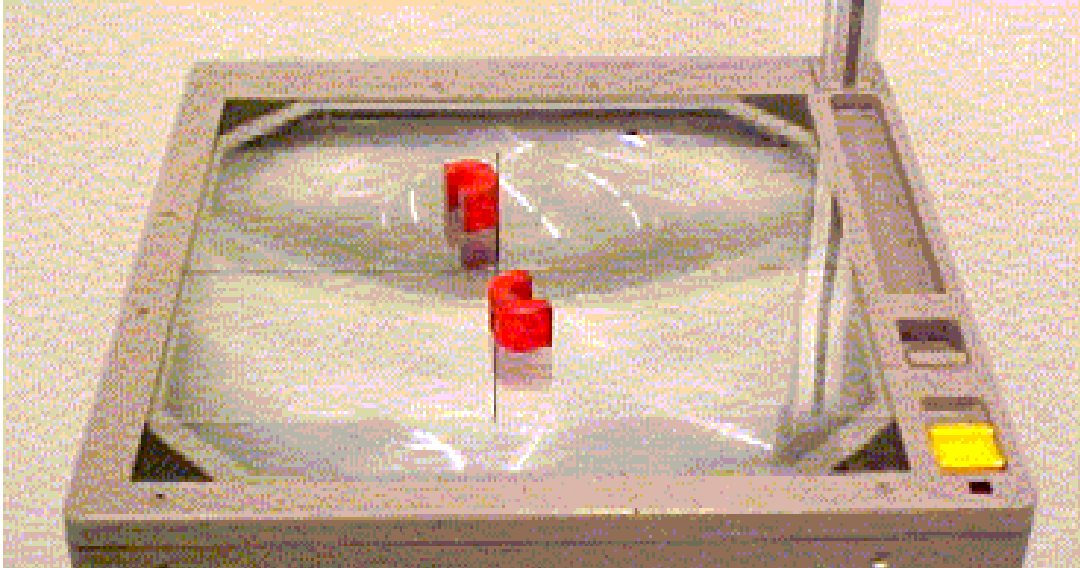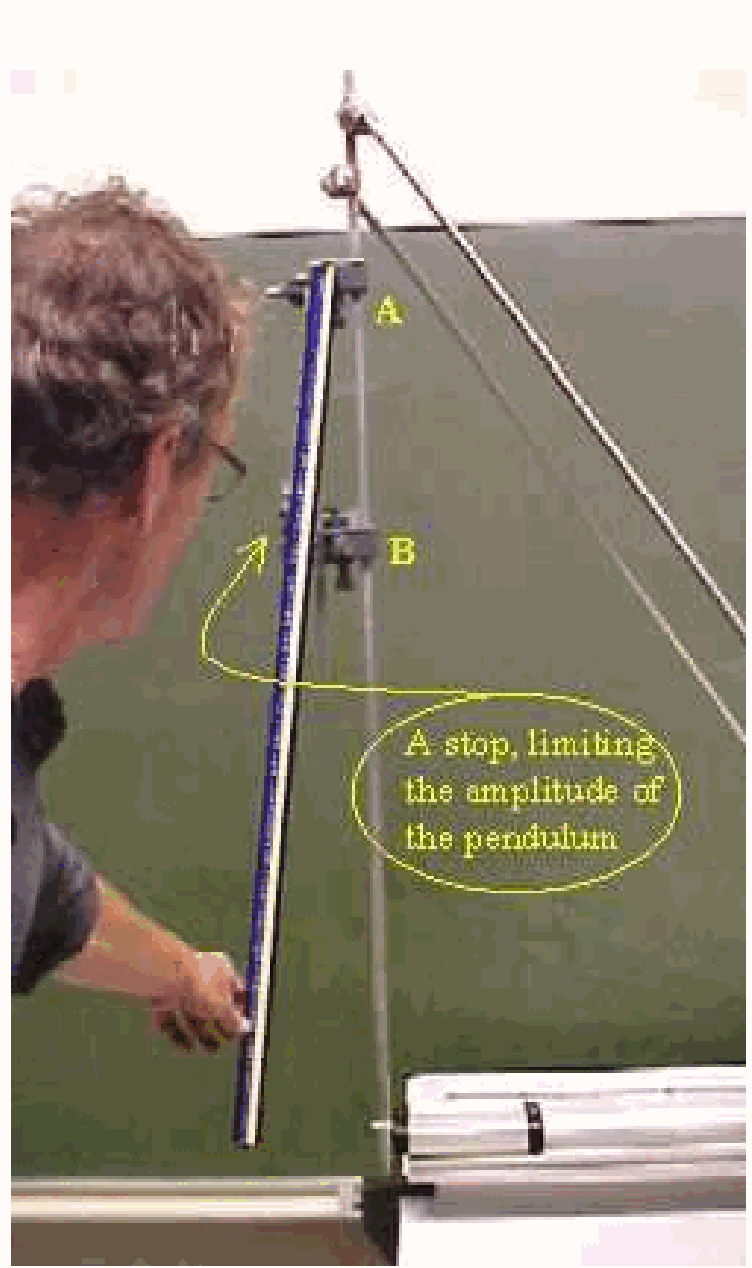05 Balls on a Rotating Ramp#
Aim#
To show conservation of angular momentum.
Subjects#
1Q40 (Conservation of Angular Momentum)
Diagram#

Fig. 217 .#
Equipment#
Rotating platform.
Ramp.
3 steel balls (we use: \(d=37.5 \mathrm{~mm}\)).
(Video camera + monitor).
Presentation#
The ramp is mounted on the platform. The steel balls are placed on it and the ramp pivot is shifted until the middle ball is at the center of rotation. The ramp is given minimum angle (about 9 degrees) and is fixed. The three steel balls are held at the top of the ramp against the post and the platform is given a rotation fast enough so that no balls roll down the ramp.
Very slowly the speed of rotation reduces and after some time the lowest ball rolls down the ramp. At the same time it can be observed that the angular speed of the platform increases.
It takes quite some time before the platform slows down enough to make the second ball roll down the ramp. Again the angular speed increases. The last ball makes a similar performance, only now the increase in angular speed is even more visible.
Extra:#
Careful observation (do the demonstration a second, third, … time) makes it possible to see also the next phenomena:
The first ball descends faster than the last ball does.
The downward acceleration on the ramp shows itself especially in the second part of its run: there is an increase in linear acceleration along the ramp.
The last ball descends in steps. During its descent it even goes upward on the ramp every now and then! The ball is oscillating down the ramp. This effect is shown more clear when the slope of the ramp is decreased
Explanation#
The three balls and the track form a system. If there is no external torque on the system, the total angular momentum of the system will not change as a ball rolls down the ramp. As one ball rolls down the ramp, the rotational inertia of the system decreases, resulting in an increase in angular speed as angular momentum does not change. The angular speed at which a ball will roll down the ramp is determined by the distance the ball is from the axis of rotation. So, as the rotating platform slows due to friction, the innermost ball will fall first, while the other two balls stay in place because they are at a greater initial radius. But since the platform speeds up as the first ball rolls down, it will take even longer before the second ball begins to roll down.
Angular acceleration:#
Since \(L=/ \omega=\) constant, we see that \(\omega\) depends on \(/\). A change in \(\omega\) is given by a change in I: \(d \omega=-\frac{L}{I^{2}} d I\). This shows that the largest change in \(\omega\) is obtained at low \(/\)-values. This is when a descending ball approaches the axis of rotation. So, the largest angular acceleration is obtained in the end of the run down the ramp. This also explains why the last ball causes the largest change in \(\omega\), since / then approaches its lowest value.

Fig. 218 .#
Acceleration along the ramp:#
The centrifugal force \(\left(F_{C}\right.\) ) acting on the ball is given by \(F_{C}=m R \omega^{2}\) ( \(R\) being the perpendicular distance from the axis of rotation to the center of the ball). The force on the ball along the ramp is \(F_{r}=m g \sin \theta-\cos \theta\) (see Figure 218). So:
\(F_{r}=k-m R \omega^{2} \cos \theta\). When rolling down, \(R\) reduces, but at the same time \(\omega\) increases: \(L=I \omega=\) constant; \(I=m R^{2}\), so: \(m R^{2} \omega=L, \omega=\frac{L}{m R^{2}}\). This gives for \(F_{r}\) :
\(F_{r}=k-\frac{C}{R^{3}}\)
When \(R\) is large, \(F_{r}\) is small and the acceleration along the ramp will be small. When \(R\) is small, \(F_{r}\) is large and the acceleration along the ramp will be large (see points 1 and 2 of the extra presentation).
It can also happen that the ball moves down the ramp ‘too much’, due to its linear inertia along the ramp. Then the rotation of the platform speeds up that much that due to the increase in centrifugal force the ball moves upwards again! Then the ball ‘oscillates’ down the ramp (see point 3 of the extra presentation).
Remarks#
It is necessary to carefully level the platform before performing the demonstration. If the rotating platform is not level, the performance will be substantially affected.
Sources#
PASCO scientific, Instruction Manual and Experiment Guide, pag. 13.
